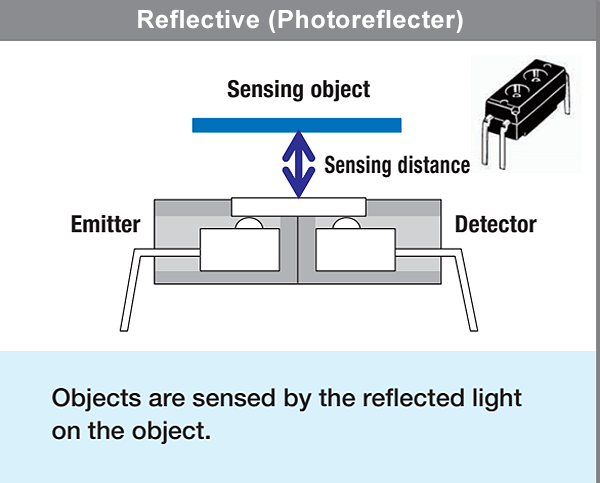What is the difference in usage between transmissive and reflective Photomicrosensors(photointerrupters)?
ID: FAQE40005E
update:
Answer
A transmissive (slot) Photomicrosensors(photointerrupter) detects objects by passing the target object through the emitted light beam from the aperture. This is ideal for applications of small object detection or accurate position sensing. A reflective Photomicrosensors detects the presence and absence of objects but also detects marked objects. This type is effective for realizing a low-profile design of a device or piece of equipment.
Explanation
Here are the structural differences and principles of transmissive (slot type) and reflective Photomicrosensors.


Here are the advantages and disadvantages of the transmissive (slot type) and reflective Photomicrosensors.

Quick tips
The transmissive (slot type) Photomicrosensors provides stable detection regardless of the object’s surface condition, position or angle. It is best recommended to first check if the design of your device/equipment can apply the transmissive Photomicrosensors (for sensing opaque objects).
| Product category | Sensors Photomicro Sensors |
|---|---|
| Classification | Selection, Characteristics |
| Related keywords |
|